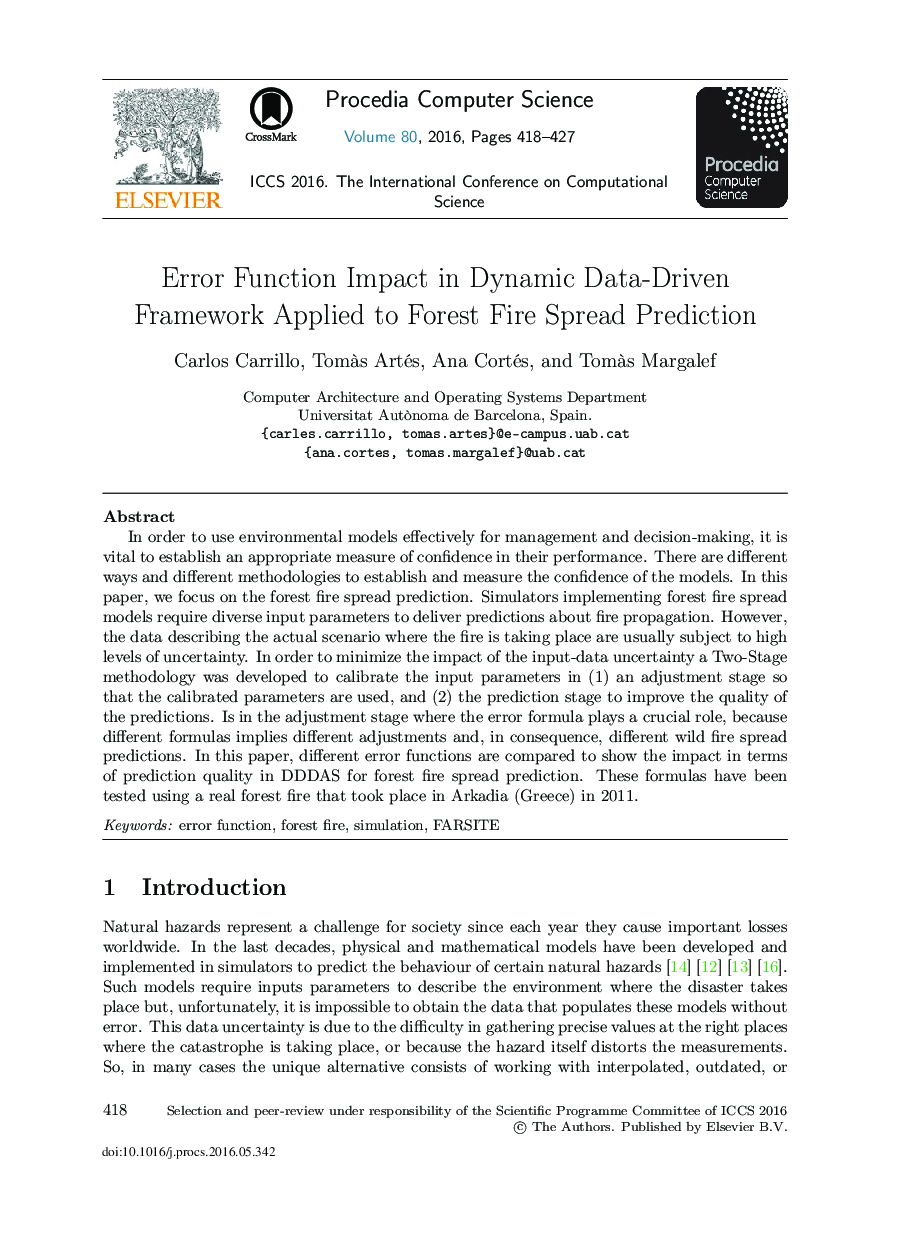| کد مقاله | کد نشریه | سال انتشار | مقاله انگلیسی | نسخه تمام متن |
|---|---|---|---|---|
| 484105 | 703253 | 2016 | 10 صفحه PDF | دانلود رایگان |
In order to use environmental models effectively for management and decision-making, it is vital to establish an appropriate measure of confidence in their performance. There are different ways and different methodologies to establish and measure the confidence of the models. In this paper, we focus on the forest fire spread prediction. Simulators implementing forest fire spread models require diverse input parameters to deliver predictions about fire propagation. However, the data describing the actual scenario where the fire is taking place are usually subject to high levels of uncertainty. In order to minimize the impact of the input-data uncertainty a Two-Stage methodology was developed to calibrate the input parameters in (1) an adjustment stage so that the calibrated parameters are used, and (2) the prediction stage to improve the quality of the predictions. Is in the adjustment stage where the error formula plays a crucial role, because different formulas implies different adjustments and, in consequence, different wild fire spread predictions. In this paper, different error functions are compared to show the impact in terms of prediction quality in DDDAS for forest fire spread prediction. These formulas have been tested using a real forest fire that took place in Arkadia (Greece) in 2011.
Journal: Procedia Computer Science - Volume 80, 2016, Pages 418–427
